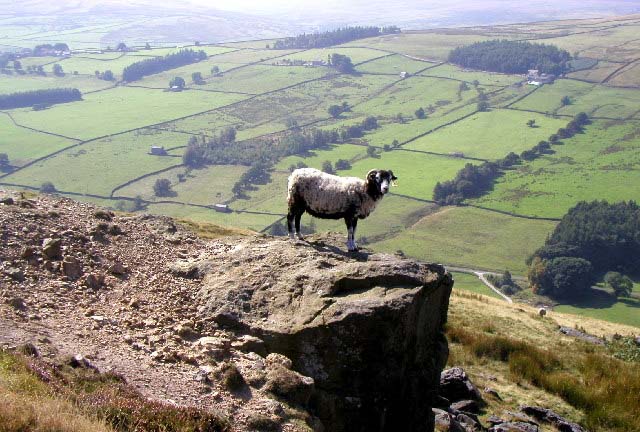
New and emerging diseases, parasite epidemics, blowfly strike and the wet and humid conditions are causing concern within the sheep industry, according to SRUC (Scotland's Rural College).
Flystrike is a distressing condition that affects sheep.
Despite the availability of effective preventative treatments, flystrike affects up to 1% of the National flock annually.
It is becoming clear that the season for flystrike is changing. In 2011 there were reports of flystrike from April through until November, extending the accepted 16 week fly season by three months. There is now so much variation in occurrence year to year and area to area that continuing to use traditional preventative programmes is just not as effective as it was.
Infestation levels vary greatly from region to region depending on a wide range of factors related to the composition of the parasite fauna, the host, animal husbandry and control practices, climate and geography. The average minimum threshold temperature for strike is 8.50 C.
Early season strike mainly affects ewes. This is reduced after shearing when lambs become the target.
High humidity in wool enables hatched larvae to develop, flies are attracted by dung and urine and wound exudates, and cases are regularly linked with sheep that also have stomach worms or footrot. Control is by dipping or the use of pour- on preparations during the flystrike season.
A free event planned for Tuesday 20th August at the Oatridge Campus of Scotland’s Rural College will update flockmasters, vets, and others in the industry with the latest knowledge on the various threats, with practical advice on suitable management strategies.
Organised by SAC Consulting, Veterinary Services, a specialist arm of the Rural College (SRUC) the event will feature their own experts as well as colleagues from partner organisations. It is open to practical farmers, private veterinary practices and anyone else with an interest in a healthy, productive sheep sector.
“This will be knowledge exchange at its best,” says Dumfries based vet Heather Stevenson, one of the organisers. “We have new virus diseases, like Schmallenberg, which has only recently been confirmed in Scotland and the liver fluke epidemic which exploded last autumn and winter. Lameness plagues many flocks and then there are the less prominent, but equally concerning diseases like Maedi Visna and Jaagsiekte which can seriously damage sheep health and productivity. We have sessions on all of these.”
In addition to the latest information on the various disease threats there will be discussion on control strategies. The role Electronic Identification or EID can play in disease control programmes will also be highlighted.
“The controversial moves by the EU to make the individual identification of sheep compulsory has been unpopular,” says Heather. “However if it is to be imposed there are ways it can be used to maximum benefit. One of our most practical and respected sheep experts Dr John Vipond will be outlining his ideas and stimulating discussion.”
The meeting begins at 10.30 am, after coffee at Oatridge with a free lunch from 12.30 – 1.30 pm and finishes at 3.15pm. While the lunch is free it would help the caterers if those planning to attend could register by phoning Dumfries Veterinary Services on 01387 267260 (where more information on the programme can also be obtained).
